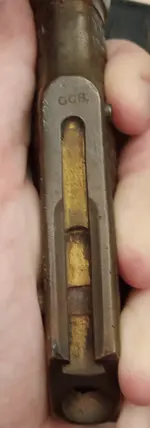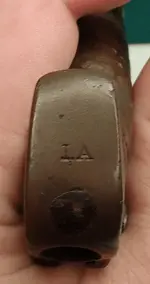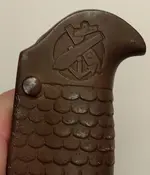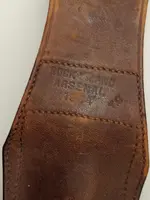TreaShore
Full Member
I'm not really sure if this post fits here or if I should move it somewhere else? Like to the general forum? I figured as this is more of ID'ing (authenticating) post then it would make more sense here.
Last month I ran across a USN model 1870 bayonet tucked away in the corner of a antique store. I never saw one in person before. Being that I had no experience with these bayonets, I didn't purchase it as I wanted to learn about how to authenticate it first. Can anyone help with their opinion of it and any suggestions of what to look for?
Online sourced example below (scabbard missing frog stud):

My research has yielded the following information. The USN m1870 bayonets were designed to be used with Remington rolling block rifles. The government placed an order for the rifles, but there were issues with the first lot of being rejected and a second batch having to be made. It seems approximately 10,000 bayonets were produced. The bayonet can be found in two versions. Type 1 was short lived and are much rarer. It used a curved Yataghan-style blade that was offset with the edge lower than the finger grip area of the handle. The Type 2 has a straight, double edged blade that was centered on the handle.




What I saw (pictured) was a type 2. The markings of " U.S.N G.G.S. 1870" on the blade seem correct in font and placement. The reverse also had the typical markings for AMES. I was in a rush and missed out on pictures of the scabbard, but it looked period and matched the leather and brass riveted version typical of the Type 2. The one interesting thing is that it had a bayonet frog with it. I could not find an image of what a USN m1870 frog looks like. Was there a specific frog used for this bayonet or was another model's frog repurposed for the 1870?
The most in-depth discussion I found was for a Type 1 bayonet. I figured these were a few things to look for on the Type 2:
1. Stippled background for the Navy Bureau of Ordinance insignia on pommel.
2. Handle markings and accuracy. I've seen some with a "S" on the cross guard, "I.A." or "J.G.F" inspector initials on the pommel and "G.G.S." above the guide bar slot. I've seen the "S" and inspector initials missing on examples posted online. I guess that they wore off on those examples?
3. Measure dimensions.
4. Check quality of the casting of handle and patinas on overall bayonet + scabbard.
5. Check stitching on scabbard. I couldn't find any information on scabbard markings.
I really want to add one of these to my collection after seeing it up close. So far it seems real to me. Any input is appreciated. Thanks.
Last month I ran across a USN model 1870 bayonet tucked away in the corner of a antique store. I never saw one in person before. Being that I had no experience with these bayonets, I didn't purchase it as I wanted to learn about how to authenticate it first. Can anyone help with their opinion of it and any suggestions of what to look for?
Online sourced example below (scabbard missing frog stud):
My research has yielded the following information. The USN m1870 bayonets were designed to be used with Remington rolling block rifles. The government placed an order for the rifles, but there were issues with the first lot of being rejected and a second batch having to be made. It seems approximately 10,000 bayonets were produced. The bayonet can be found in two versions. Type 1 was short lived and are much rarer. It used a curved Yataghan-style blade that was offset with the edge lower than the finger grip area of the handle. The Type 2 has a straight, double edged blade that was centered on the handle.
What I saw (pictured) was a type 2. The markings of " U.S.N G.G.S. 1870" on the blade seem correct in font and placement. The reverse also had the typical markings for AMES. I was in a rush and missed out on pictures of the scabbard, but it looked period and matched the leather and brass riveted version typical of the Type 2. The one interesting thing is that it had a bayonet frog with it. I could not find an image of what a USN m1870 frog looks like. Was there a specific frog used for this bayonet or was another model's frog repurposed for the 1870?
The most in-depth discussion I found was for a Type 1 bayonet. I figured these were a few things to look for on the Type 2:
1. Stippled background for the Navy Bureau of Ordinance insignia on pommel.
2. Handle markings and accuracy. I've seen some with a "S" on the cross guard, "I.A." or "J.G.F" inspector initials on the pommel and "G.G.S." above the guide bar slot. I've seen the "S" and inspector initials missing on examples posted online. I guess that they wore off on those examples?
3. Measure dimensions.
4. Check quality of the casting of handle and patinas on overall bayonet + scabbard.
5. Check stitching on scabbard. I couldn't find any information on scabbard markings.
I really want to add one of these to my collection after seeing it up close. So far it seems real to me. Any input is appreciated. Thanks.








